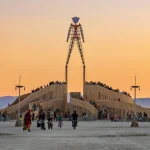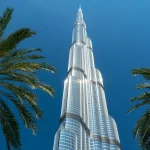In Hayao Miyazaki’s Howl’s Moving Castle’s Architecture, the moving castle serves as more than just a background. It embodies transformation, freedom, and the conflict between nature and industrialization. The castle is a living entity that changes and grows with the characters, reflecting their emotional journeys and the turmoil they experience. The patchwork design of the castle symbolises the fragmented nature of the characters’ personalities and the chaotic world they live in.
In Howl’s Moving Castle, Hayao Miyazaki creates more than a magical setting; he gives the plot momentum, expresses its concepts, and moulds the characters’ emotional terrain all through the use of architecture. The moving castle is a weird and massive building with a design that mirrors the film’s deeper themes of transformation, freedom, and the conflict between nature and industrialization.
The castle’s architecture is more than just a simple background; it’s a living, breathing entity that changes and grows with the characters that live there. Miyazaki’s distinctive fusion of architectural realism and fantasy, serves as both a visual spectacle and a narrative tool, encapsulating the film’s emotional depth while grounding it in a world that feels tangible yet magical.
A Castle in Transition
Transformation is one of the main themes of Howl’s Moving Castle, and the castle’s construction profoundly embodies this idea. The castle itself is always changing, moving, and evolving, much like the individuals who go through mental and physical transformations along the narrative. This dynamic framework reflects the individual paths of characters such as Howl, the mysterious wizard, and Sophie, the main character of the movie.
After being cursed and changed into an old woman, Sophie must go through her path of self-realisation and empowerment to function in her new body. Throughout the movie, Howl, who is initially portrayed as conceited and distant, also changes, coming to care about other people and face his concerns. The castle’s shifting appearance serves as a visual metaphor for these transformations, reflecting the characters’ fluid identities and the emotional turmoil they experience.
The patchwork design of the castle—built from disparate parts and materials—symbolises the fragmented nature of Howl’s personality and the chaotic world in which the characters live. The structure is unstable and unpredictable, much like the world around it, and this instability echoes Sophie’s internal struggle as she grapples with her new identity and Howl’s resistance to responsibility.
The Conflict Between Nature and Technology
The conflict between nature and industrialization is a recurrent topic in many of Miyazaki’s films. The architecture of the castle reflects the spectre of war that haunts the world of Howl’s Moving Castle. The building itself is shaped like a massive mechanical beast, with industrial features like gears, chimneys, and metal parts taking centre stage in the architecture. The industrial style of the castle stands in stark contrast to the surrounding natural surroundings, illustrating the tension between technology and the environment.
The contrast between the natural and industrial features draws attention to the mechanisation of society and the destructive power of conflict. The disorganised, broken architecture of the castle mirrors the disjointed state of the setting in which the characters live, a world torn apart by conflict and political strife. Yet, the castle’s mobility allows it to traverse the natural landscape, suggesting a possibility of coexistence between technology and nature—a theme that resonates with the film’s broader message of balance and harmony.
A Mobile, Autonomous Structure
The mobility of Howl’s castle is arguably its most noticeable feature. Howl’s castle defies the rules of conventional design by being a movable, self-sustaining edifice that travels through landscapes on its own, in contrast to traditional castles, which are immobile and anchored in a particular place. The castle can travel across a variety of terrains, from farms to mountains, unhindered by its surroundings thanks to its legs, which resemble those of a gigantic bird or bug.
This mobility is more than simply a fantasy storytelling device; it’s a reflection of Howl’s personality and a fundamental element of the castle’s architecture. Howl uses the castle as a way to dodge society’s expectations since, as a wizard, he is afraid of commitment and responsibility, much as he uses magic to avoid the conflicts of the outside world. The architecture of the castle becomes an extension of his personality—unpredictable, elusive, and constantly on the move.
A Patchwork of Styles and Materials
Howl’s castle’s design is a singular fusion of diverse architectural motifs and materials, incorporating aspects from multiple eras and civilizations. The castle is a disorganised synthesis of several features, ranging from industrial chimneys and mechanical gears to Gothic towers and medieval turrets. The varied style of this piece portrays Howl’s disjointed nature and his resistance to following social mores. Howl’s inner world, where nothing is permanent and everything is subject to change, is physically represented by the castle.
Another important aspect of the castle’s construction was the variety of materials used. The conflict between nature and technology that permeates the whole movie is reflected in the contrast between industrial elements like gears and metal and natural materials like stone and wood. This difference is especially noticeable in the interior of the castle, where cosy, domestic spaces exist alongside cold, mechanical machinery. The duality of the design mirrors the duality of Howl himself, who is both a powerful wizard and a vulnerable, insecure individual.
The Doorway as a Portal
Howl’s castle has a multi-dimensional doorway that leads to several locations, making it one of its most amazing features. The door opens into a variety of worlds, from a calm rural setting to a busy metropolis, with a simple turn of a dial. This architectural element blurs the distinction between truth and fiction, adding to the castle’s magical atmosphere. The idea that the building may act as a portal to new experiences and possibilities, as well as the theme of escape, are reflected in the door’s potential to connect other realms.
The concepts of control and choice are likewise symbolised by the door. Like he can control his fate, Howl may decide where the castle is located. But as the movie goes on, it turns out that this power is both a blessing and a curse. The doorway, while offering freedom, also represents the burden of responsibility that comes with the ability to control one’s fate.
A Living, Breathing Space
The architecture in Miyazaki’s films is dynamic and alive rather than static. A good illustration of this is Howl’s castle, which is always shifting and changing in the movie. The building actively shapes the story, serving as more than just a background for the action. The ever-changing shape of the castle is a reflection of the character’s emotional states, especially that of Howl, whose choices and moods have a direct impact on the castle’s look.
The way that Miyazaki depicts buildings also affects the tone of the movie. The protagonists’ uneasiness as they negotiate a world on the verge of conflict is mirrored in the chaotic, disconnected design of the castle, which adds to the sense of unpredictability and stress. However, the warm interiors of the castle, especially the kitchen and hearth, offer a feeling of warmth and comfort, offering a refuge from the outside world. This duality in the architecture—chaotic on the outside, but warm and inviting on the inside—reflects the film’s exploration of the tension between external conflict and internal peace.
The Impact of Architecture
Similar to how true stories fit within the framework of reality, the shots are designed to depict the world that the main characters inhabit and how they fit into a bigger context. Many animations would become meaningless without the background, but when it is present, the tale can grow and convey more than what the screenplay could by itself.
By having his characters continually interact with their surroundings in ways that traditional animation cannot, Miyazaki elevates this to the status of an art form in and of itself. Sophie coughs from the smoke, falls against buildings, trips over objects, and even gets chilled from the wind.
Blending Fantasy with Architectural Realism
The architecture of Howl’s Moving Castle conveys the fantasy nature of the structure. The castle defies conventional architectural design principles and the laws of physics with its multi-dimensional gateway, mobility, and transformability. These imaginative components are based on a sense of architectural realism, nevertheless. The rules of building and balance still apply to the castle even with its magical abilities. For example, its legs must be sturdy enough to sustain its weight. Its many parts must also fit together cohesively so that the whole can function as a whole.
The combination of realism and fantasy is a defining feature of Miyazaki’s writing. He creates a universe that is both enchanting and believable by enveloping the fantastical components of the castle within a realistic architectural framework. In the logic of the movie’s universe, the castle is a useful architectural structure rather than merely a fantasy invention.
The insides of Howl’s castle are surprisingly anchored in reality, despite the chaotic and surreal facade. The living room and kitchen areas of the castle are very comfortable and homely, evoking memories of classic European residences. These rooms create a sense of familiarity and comfort within the film’s fantasy setting by standing in stark contrast to the chaotic environment.
Howl’s Moving Castle is a story of transformation—both physical and emotional, the castle itself being a dynamic, ever-changing entity adds a layer of interest and the characters in the film undergo significant changes, much like the castle. The architecture isn’t a mere background here, it provides a setting of familiar yet unfamiliar places according to the context of the scene which adds a layer of depth.




























Leave a comment